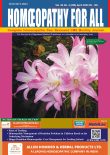Emphasis of Homoeopathic Pharmacy for BHMS Students
Keywords:
disease prevention, individualized, standardization, therapeutic and toxicologi cal studiesAbstract
Homeopathy was introduced in India in the early 19th century. It first flourished in Bengal and later spread throughout the country. In the beginning, the system was widely practised by amateurs in the civil and military services and others. Mahendra Lal Sircar was the first Indian who became a homeopathic physician, inspiring many allopathic doctors to follow his lead and begin homeopathic practice.The Calcutta Homeopathic Medical College, established in 1881, was the first homeopathic medical college in India and played a major role in popularising homeopathy across the nation.Homeopathy is a holistic system of medicine with a long history of use in health maintenance, disease prevention, and treatment, particularly for chronic diseases. In modern times, patients and health care providers alike are calling for health services that emphasize individualized, person-centred care. A wide variety of natural sources—plants, animals, minerals, nosodes, and sarcodes—serve as the basis for homeopathic medicines.
Downloads
References
Homoeopathic Pharmacopoeia of India.
Ghosh, A. K. (2010). A short history of the development of homeopathy in India. Homeopathy, 99(2), 130–136.
Sachan, A. K., Vishnoi, G., & Kumar, R. (2016). Need of standardization of herbal medicines in modern era. International Journal of Phytomedicine, 8(3), 300–307.
Sachan et al. (2016). Need of standardization of herbal drugs in modern era. International Journal of Phytomedicine, 8(3), 300–307.
Despite all odds, homeopathy continues to gain popularity. Available at: https://timesofindia.indiatimes.com/blogs/voices/despite-all-odds-homeopathy-continues-to-gain-popularity/
Gousta, B. (2017). The role of homeopathy as a complementary and alternative medicine and its application. International Journal of Medical Reviews, 4(2), 62–63.




